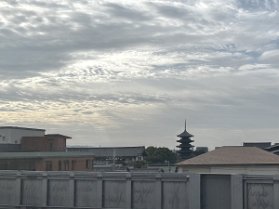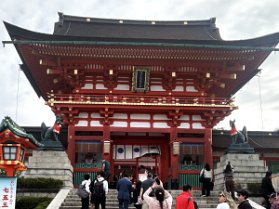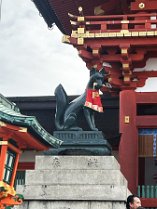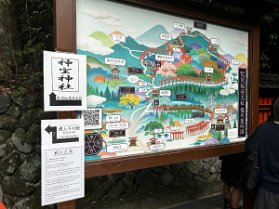
Videos 12/31/03
2 videos

View of To-ji Temple
To-ji Temple is a historic Buddhist temple with a 5-story wooden pagoda & sculptures of deities from the 8th century. Since 823 To-ji has been the headquarters…
Fushimi Inari Shrine
Fushimi Inari Shrine lies at the base of Mt. Inari, a low mountain which boasts a circumference of nearly 87 and a half meters at the base. The shrine is…

Fushimi Inari Romon Gate
This building is said to have been built by the regent Toyotomi Hideyoshi in 1589. It is said that when Hideyoshi’s mother fell ill, Hideyoshi prayed to Inari…

Fushimi Inari Romon Gate
A fox holding a key in its mouth symbolizes the kitsune's role as a guardian of treasures and secrets. The key represents access to knowledge or hidden truths,…
Fushimi Inari Romon Gate
The gate has statues of the Minister of the Left and the Minister of the Right on either side, who are said to protect the gods.
Fushimi Inari Shrine
Five deities are enshrined together in the main shrine building. The building is made in a style called Uchikoshi Nagashi-zukuri, with corridor-style…
Fushimi Inari Shrine
The building is large by shrine standards, with decorations expressing the cheerful, elegant and graceful style of the Azuchi-Momoyama period in the late 16th…
Azumamaro Shrine
This shrine is the "Azumamaro Shrine". The deity of this shrine is Azumamaro Kada (1669-1763 AD). He was born along the pedigree of the Fushimiinari shrine…
Fushimi Inari Taisha Kaguraden (Stage)
The building to the right of the main shrine was constructed in 1882. It is a noh stage donated by the leader of the Kongo School of noh. Today, the stage is…




